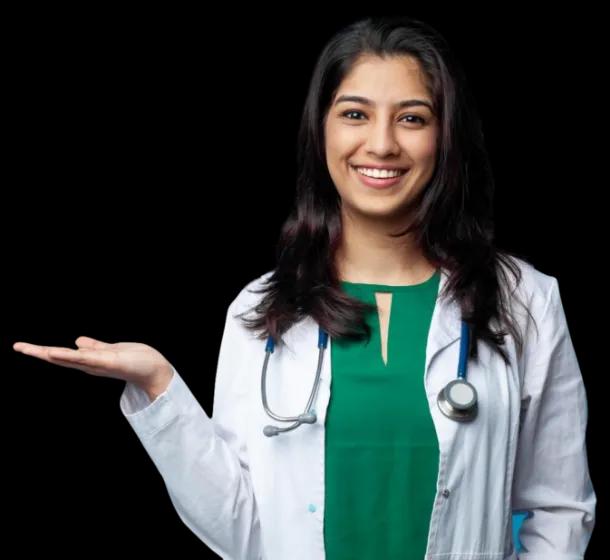How to Treat a Blood Clot in the Leg : Varicose Veins Consideration
In This Article
How to Treat a Blood Clot in the Leg : Varicose Veins Consideration
Dr. Sanjana
Updated on March 07, 2024
Medically verified by Dr. Arya
Fact checked by Dr. Pournami

Vascular
5 min read
Do you have irregular bumps and swellings on your leg? These could be varicose veins. Varicose veins are nothing but swollen, superficial veins in your leg that carry a lot of blood.
Are you scared about the blood clot in your varicose veins? Are those clots in your leg worrying you? Are you seeking effective ways to treat the blood clot?
Worry no more, we are here to help you. Mykare Health is here to explain and make these things clear about varicose veins. So let's get started.
What are Varicose Veins?
Each one of us has superficial and deep veins in our legs. You can look at it as 2 circuits, one on top and one below. The connectors between them are known as perforators.
Ideally, blood flows from superficial to deep veins. The muscles around the deep veins act like a second heart. It pumps the blood against gravity towards the heart.
What's important to note is the direction of blood flow. It is from superficial to deep veins through the perforators. When this gets messed up, the blood stays and accumulates in the superficial veins.
This blood accumulation is what causes varicose veins. If this is the case, you will experience some pain and heaviness of legs of varying intensity.
Other symptoms are itching, swelling and pigmentation of the affected area. In some cases ulcers may develop in the inner side of the ankle.
What are clots?
The problem of varicose veins does not end here. The blood accumulation causes stasis. Stasis promotes clot formation. Clots in superficial veins lead to inflammation. This is known as superficial thrombophlebitis.
-
The clots in the superficial veins are fairly benign. It is caused by minor trauma like pricks and scratches to the varicose veins.
-
You may experience pain, redness, swelling and induration around this area. The veins become increasingly painful and cord-like.
-
The superficial veins, unlike the deep veins, do not have muscles around them. Therefore the clot does not get dislodged into other parts of the body.
-
It subsides on its own and the inflammation goes down in a few days. The cord-like feel of the veins also softens over time.
-
Cold compress and pain killers during this time can be used to kill the pain and inflammation.
What If The Clot is in The Deep Vein?
This is called deep vein thrombosis (DVT). This is an actual medical emergency.
What happens in such cases?
-
The muscles around the deep vein acts as a pump. It can dislodge the clot to other parts of the body including major organs like lungs, brain etc.
-
In the lungs, it can cause acute pulmonary embolism. This basically means a clot in one of the arteries in your lungs.
-
This makes breathing difficult and can evolve rapidly to fatality. Hence quick actions must be taken to treat this condition.
-
DVT is seen as an acute swollen leg with severe pain. All signs of inflammation will be seen like redness, pain, swelling, induration, warm skin etc.
 6 min read
6 min readUnderstanding the Stages of Varicose Veins: Symptoms and Progression
 5 min read
5 min readBeneficial Exercises For Varicose Veins: Tips And Routines
 5 min read
5 min readVaricose Veins Medicine: Benefits and Potential Side Effects
Book Your Consultation Now
How Do You Treat Such Conditions?
Varicose veins and clots can be diagnosed clinically. In some situations, a duplex Ultrasonography is done to confirm the diagnosis.
For DVTs, Duplex ultrasonography with blood tests are done. Blood tests such as D-dimer indicate the presence of clots.
Painkillers are given to control the pain caused by varicose veins. Compression stockings are effective to prevent blood accumulation. Limb elevation with pillows under your legs can also relieve pain by increasing blood flow towards the heart.
There are 3 types of stockings providing different degrees of compression. Here's a list in ascending order of degree of compression:
- Support pantyhose
- Over-the-counter compression hose
- Prescription-strength compression hose
In severe conditions:
- Surgery can be done to remove or close the affected vein.
- Ablation therapies are used in recent times. Using a laser, the affected vein is closed. It is a quicker and a fairly safer option.
- Foam Sclerotherapy is another option. A chemical compound is inserted in the veins. This causes irritation and scarring inside the veins and closes the lumen. This is done for smaller veins.
Superficial vs. Deep Vein Thrombosis
As mentioned above, superficial thrombophlebitis is fairly benign. It subsides on its own without needing much medical attention.
On the other hand, DVTs are a medical emergency. You need to rush to the hospital if you are experiencing any of the symptoms mentioned above.
-
After confirming your diagnosis, your doctor will start you on heparin. Blood thinners in the right dosage and combination will prevent clot formation.
-
Aspirin is one such important drug which prevents future clots. It will most likely be given for long term prophylactic treatments.
-
Other blood thinners will be given tailored to your condition. This can be a combination of oral and injectables.
-
A few other interventional procedures may also be suggested such as an IVC filter.
Prophylactic Do’s and Don'ts
- Strictly follow the drug regimen prescribed by your doctor. Blood thinners can be harmful and cause bleeding if not taken the right way.
- Inform your doctor if you are pregnant or planning to conceive. Certain drugs are not safe during pregnancy.
- Use compression stockings
- Be active - Exercise regularly. Sitting or standing still for a long time can cause stasis of blood and increase chances of blood clots.
- Avoid long journey flights or keep changing positions to prevent stasis.
- Avoid injury to legs, be alert of your surroundings.
- Weight loss and dietary changes will benefit. Consume a low-salt diet
- Quit smoking.
- Low heeled shoes help your calf muscles to push the blood upwards. Avoid high heels for a long duration.
Varicose vein is a fairly common disease.
It presents with pain and smaller swellings over the legs.
In severe cases, ulcers can develop over the inner part of the ankle.
Clots can occur in both superficial and deep veins.
Superficial clots are benign and can be managed at home.
Deep vein thrombosis is a medical emergency.
Blood thinners are acute and long term management for thrombotic conditions.
Strict adherence is a must with blood thinners. Regular check up is necessary to monitor the action of the drugs.
Surgery may be required in severe cases.



